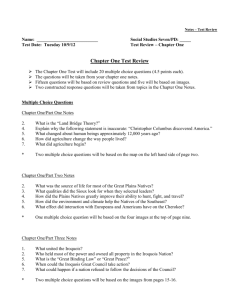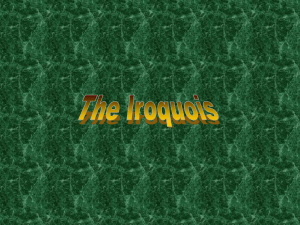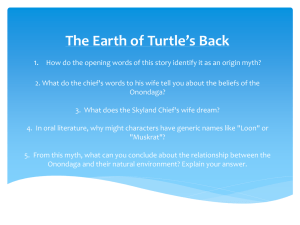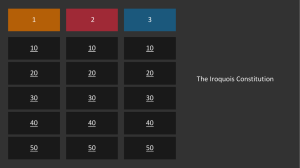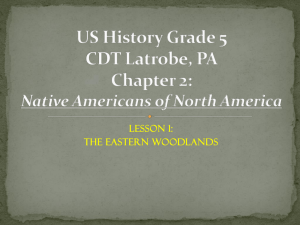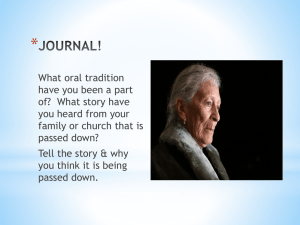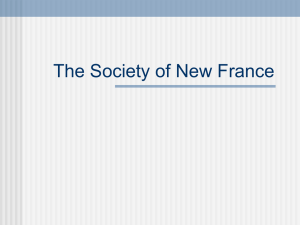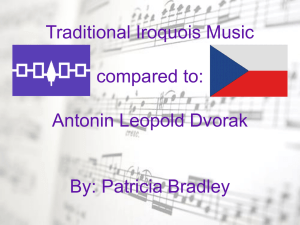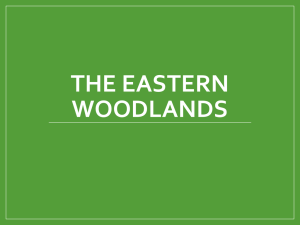Iroquois, Mingo, and Wyandot
advertisement
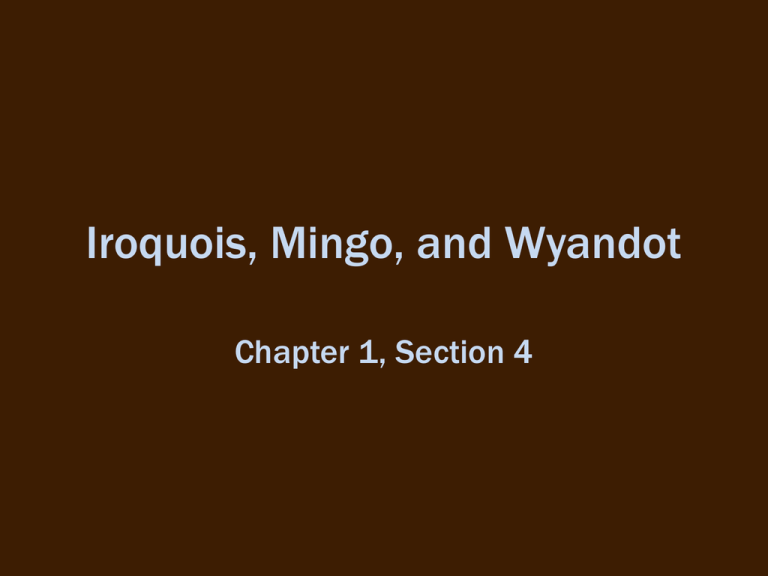
Iroquois, Mingo, and Wyandot Chapter 1, Section 4 Historic Indians • By 1650 Historic Indian groups came to Ohio – Lived after written history • Did not have their own written languages, however Europeans who met them did. • Written records from Europeans tell us a great deal about these Native Americans. Native American Legends • Stories, songs, and legends can also tell us much about early Native Americans • Legends stories passed down over time – Used to explain how everything in the world came to be – Used to tell a tribe’s history Native American Legends • Tribe a group that shares the same language and has the same leaders • Legends often told how tribes first came to be • Legends provide clues about how the people saw their world – Tell much about a tribe’s history and culture Cultures and Conflict • Tribes used natural resources to survive, and to make goods for trade • Traded with each other for the resources they didn’t have • Sometimes fought each other for control of land and resources Cultures and Conflict • By early 1600s, Europeans began to settle in parts of North America • Settlements grew and spread into Native American territory --- conflict Cultures and Conflict • Europeans and Native Americans traded. – Native Americans traded animal skins and furs for European goods such as cloth, glass, and metal tools and weapons. • As fur trade increased, so did the demand for furs. – Led to conflicts between Native Americans over hunting lands The Iroquois • 1650 came to Ohio from the Northeast • powerful – fought and drove out other tribes who lived around Lake Erie and along Ohio’s rivers The Iroquois • Mostly wanted to hunt and trap animals in Ohio – did NOT want to settle there • Fished, hunted deer, beavers, foxes, and mink – Became a major source of furs for European traders • Gathered nuts and fruits, grew corn, beans, and squash The Iroquois • Lived in villages and built large wooden homes called longhouses – Wooden poles = frame; sheets of bark = cover – Small fires kept burning inside • Several families lived in one longhouse clan – Clans were led by women and often named after animals – Put their crest at their longhouse entrance The Iroquois • Each family slept on a platform – Weapons, tools, and baskets stored underneath – Pots, food, skins stored on shelves above the platform The Mingo • Related to the Iroquois; spoke an Iroquois language and had similar customs; also known as the Seneca • mid-1770s moved to Ohio from the east • Lived along the riverbanks of the Scioto and Sandusky Rivers in longhouses. • Communities develops near present-day Columbus The Mingo • The tribe was formed by members of the Iroquois and other tribes. – Some were hunters who had left the Iroquois – Others were members of tribes who had been defeated by the Iroquois The Mingo • At first, lived peacefully with the Iroquois – Treated as equals by the Iroquois • Members of the Mingo tribe were not allowed to serve as Iroquois leaders – Began to act more like their own tribe over time • 1750 conflicts with the Iroquois and European settlers pushed the Mingo tribe into eastern Ohio The Wyandot • 1650 Iroquois attacked tribes near Ontario to gain hunting land – Wyandot formed from tribes fleeing the Iroquois • mid-1700s moved into northern Ohio from Canada – Settled mainly in villages along the Sandusky River and the Huron River The Wyandot • Their language is related to the Iroquois language • Lived in longhouses • Women leaders chose the Wyandot chiefs • Fierce warriors • Strongly resisted European settlements near where they lived
